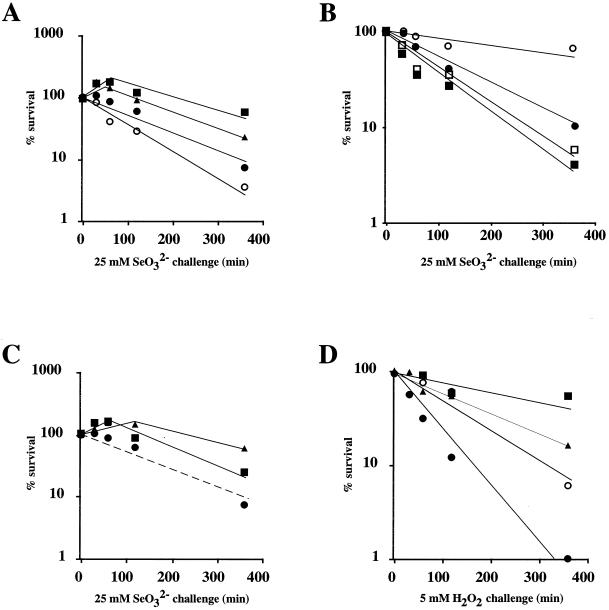FIG. 1.
Adaptive response of E. coli to selenite and H2O2 stresses. Exponentially growing cells (E. coli MC4100, GC4468, or BW829) were pretreated or not with 30 μM H2O2, 100 μM paraquat, 500 μM SeO42−, or 250 μM SeO32− in the presence or absence of 100 μg of chloramphenicol/ml. After 60 min of treatment, 25 mM selenite (A, B, and C) or 5 mM H2O2 (D) was added to the cultures. At intervals, samples were diluted and plated onto LB agar to monitor cell viability. The data are mean values from at least three experiments, with essentially similar results. (A) MC4100 strain. Symbols: •, not pretreated; ▪, pretreated SeO32−; ▴, pretreated SeO42−; ○, pretreated chloramphenicol plus SeO32−. (B) GC4468 strain (symbols: •, not pretreated; ○, pretreated SeO32−) and BW829 strain (symbols: ▪, not pretreated; □, pretreated SeO32−). (C) MC4100 strain. Symbols: •, not pretreated; ▪, pretreated H2O2; ▴, pretreated paraquat. (D) MC4100 strain. Symbols: •, not pretreated; ▪, pretreated H2O2; ▴, pretreated SeO32−; ○, pretreated SeO42−.

